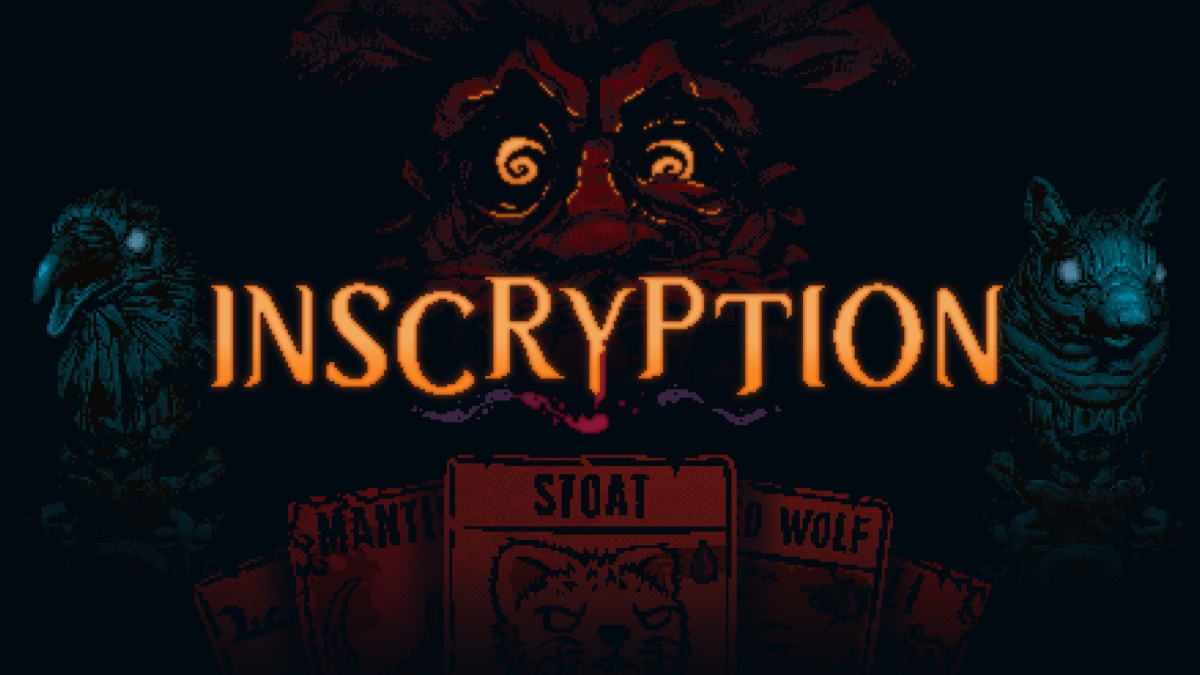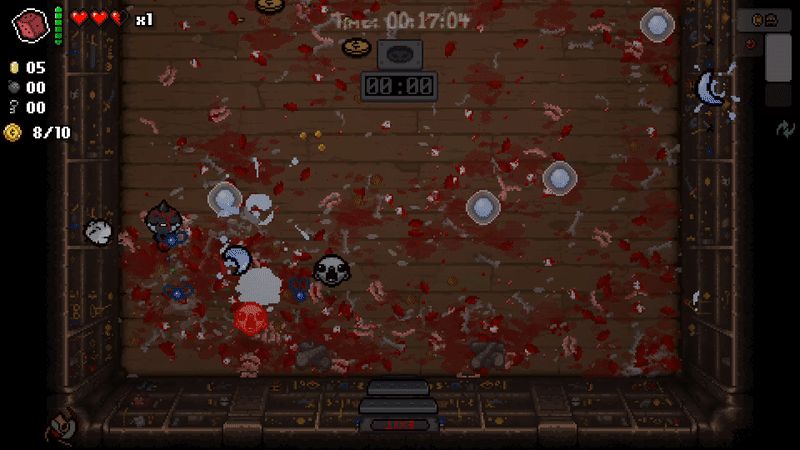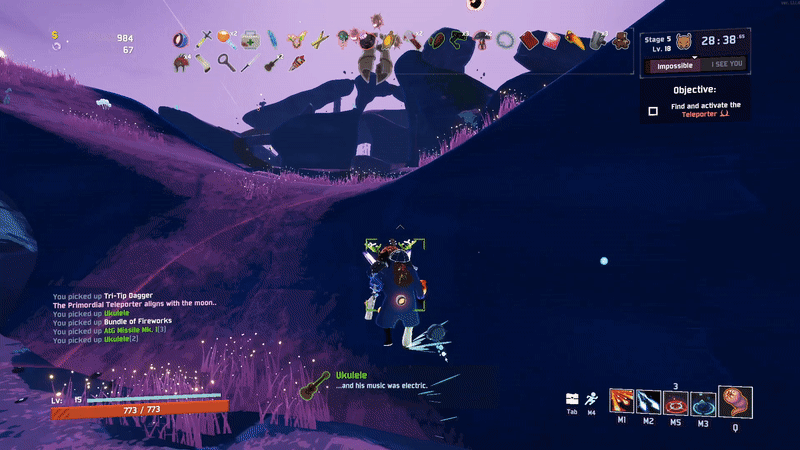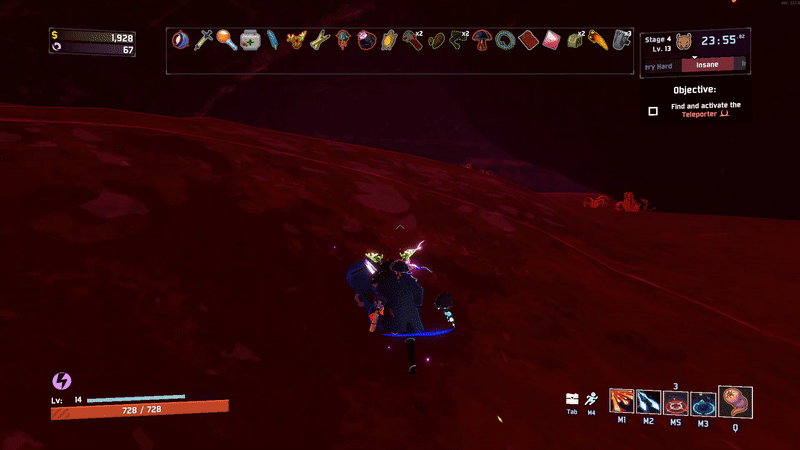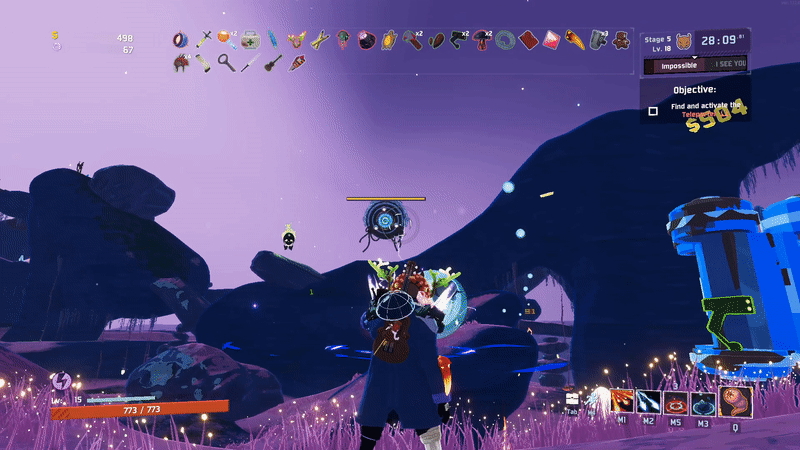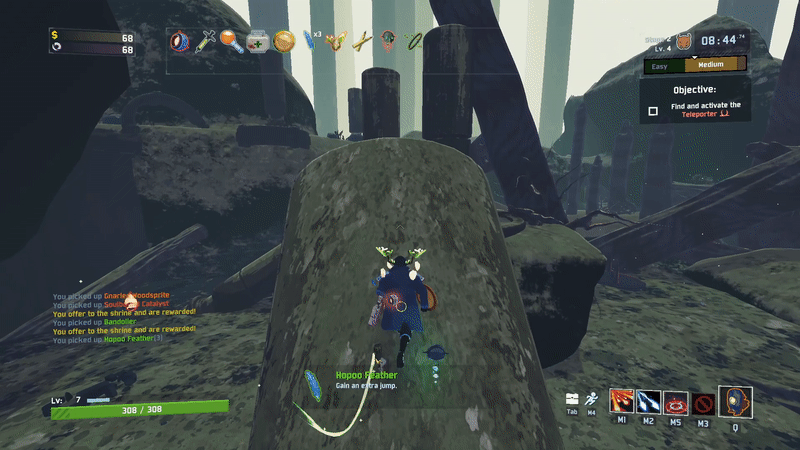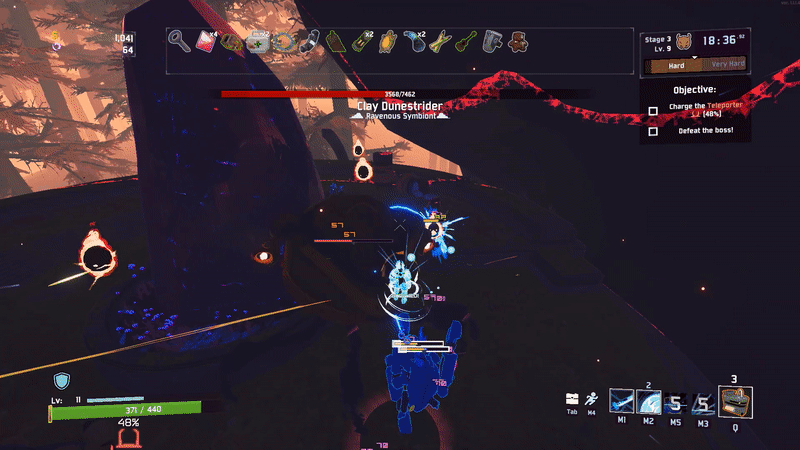While on break for the holidays I found myself finally taking a look at a little indie card battler game I’d heard much about. Daniel Mullins’ Inscryption is a 2021 roguelike card battler in which you build a bestial-themed deck of cards to traverse a table-top adventure scenario game-mastered by a mysterious shadowy card dealer, who seems to be keeping you in a spooky woodland cabin. You may have heard the game is rife with compelling mystery and secrets, and it is, so rest assured I won’t be spoiling anything about the game, merely talking about its combat mechanics sans any story context.
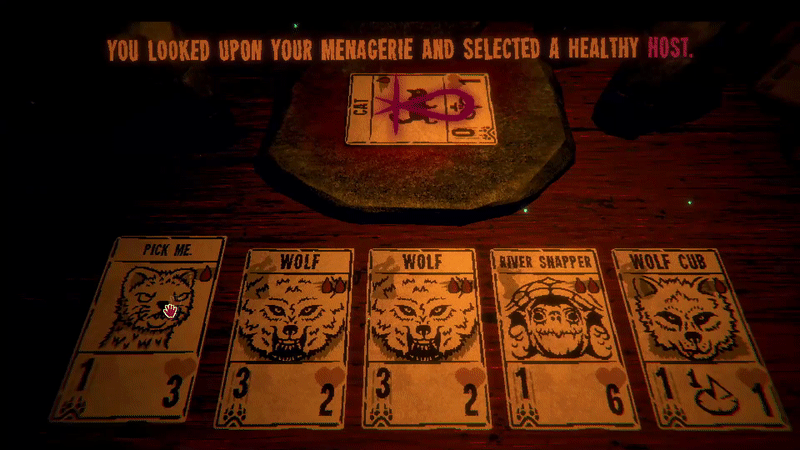
Specifically I want to talk about this concept of ‘breaking the game’, or employing a strategy so overwhelmingly power it almost seems to throw off the difficulty balance. Here’s the thing though, well-designed games like Inscryption and The Binding of Isaac: Rebirth want to create this feeling in the player of overwhelming power, which is why they tend to be so brutally difficult at the start. Roguelike games, by their nature, are games designed with the players’ repeated failure in mind, and thus repeated replaying. With each of those failures, generally, new inherent advantages are collected, as well as new knowledge of the game. By game’s end, the player will have accrued a large number of mechanical advantages and game knowledge, allowing them to plow through challenges that once seemed insurmountable. The game designer’s fear of the ‘Dominant Strategy’ is the trivialization of their game mechanics.
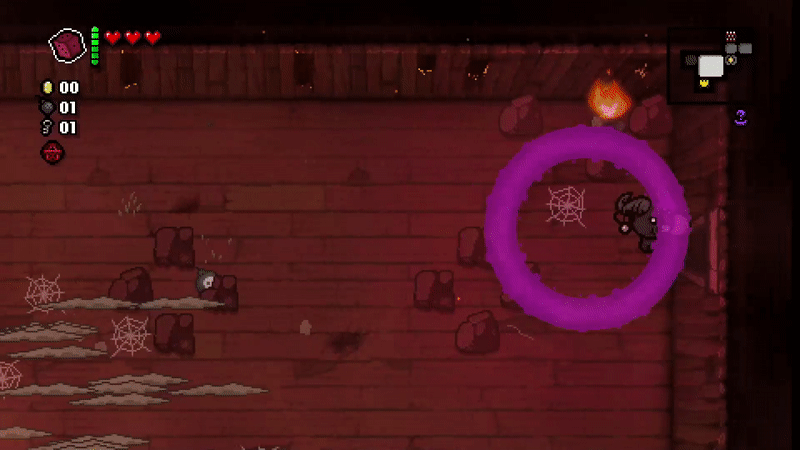
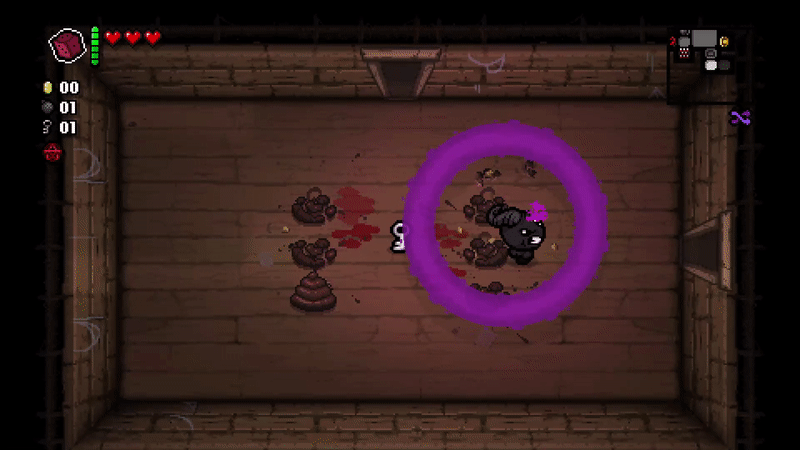
What’s clever about a lot of the more popular roguelikes, is that they leverage powerful strategies as a way to engage the player with their systems. Knowing exactly what the most reliable and powerful combinations of weapons and items in The Binding of Isaac: Rebirth takes time, effort, and exploration, so by the time you’ve ‘broken the game’ so to speak, you’ve already gone through a lot of the game’s interest curve just getting there, and a well balanced game can tilt that power scale back at you. Often in the roguelike Hades I’ve found myself achieving a combo that can absolutely demolish early content, but I’m then brick walled by later enemies, and have to change up my approach, keeping the game dynamic and interesting. These games make the opposition an overwhelming obstacle, so that overwhelming power is not only incentivized in the player, but almost demanded.
I’m tending more and more towards designing the opposition in a combat game to be more powerful, rather than limiting the powers and options of the player. Finding wacky solutions to the problem of ridiculously deadly enemies is fun! Isaac allows you to reach such absurd levels of power that it’s comical, and yet Isaac is so vindictively engaging. Every time I fail in that game I’m just reminded of how much I want to taste that overwhelming power again, I think about all the little ways I could combine and recombine the disastrously large number of powerups existent in Isaac, and I dive right back in. The same is the case for competitive games with deckbuilding elements such as Dota 2‘s Ability Draft, in which one drafts the ability for their player hero from a pool of powers that don’t normally go together in Dota 2‘s base game modes, but can combine to create some ridiculous effects. The possibilities are just so tantalizing, because the designers went out of their way to insure the various elements all meshed with each other in interesting ways, without much need for exceptions or limitation. Dota 2 also has its own roguelike mode that utilizes design sensibilities as I’ve described. Enemies are monstrous, lethal, and oppressive, but clever power up allocation can render what once seemed impossible, routine, and it’s an exciting climb to that point.
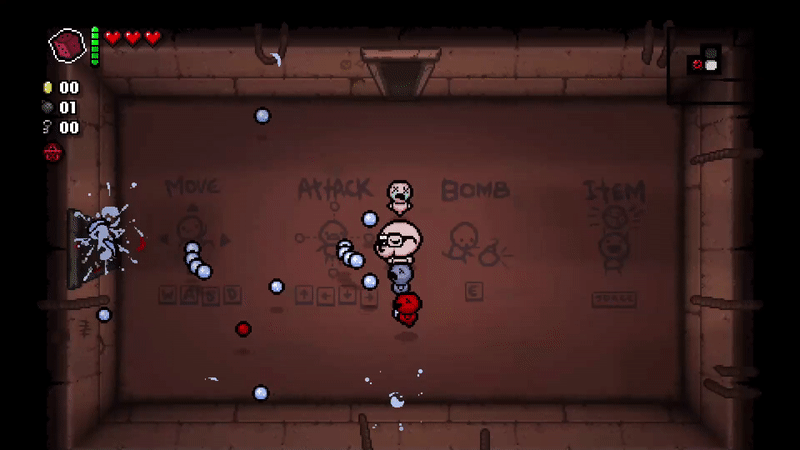
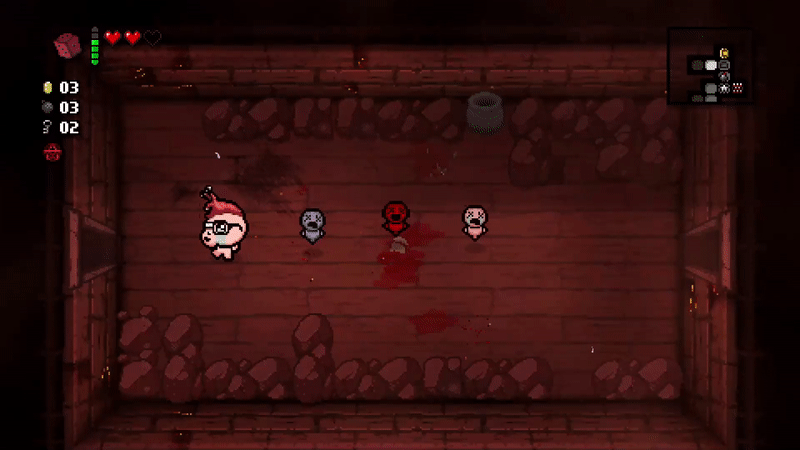

No matter how overwhelmingly powerful one might become in these games, the games generally stay extremely lethal throughout. That is, even if you can crush your opposition with a flick of the wrist, a couple mistakes may still lead to a loss, especially later in the game. Pulling a bad hand in Inscryption, all of your overpowered cards aside, can still be disastrous if you don’t have a plan to stall the game until you can pull your winning cards. This is a pattern games which employ the concept well have in common – their core gameplay is still reinforced even as the player becomes ‘overpowered’. In Hades and Isaac, you still have to be able to dodge attacks, or you’ll most likely be toast very quickly. In Dota‘s Ability Draft, you still need to have a feel for the game to make the advantageous plays. In Inscryption, you still need to think through your strategy in case of unfavorable scenarios, as described above.
The key is to make things dramatic. The game can quickly swing in either direction based on the player’s performance, and if the player ultimately becomes an unstoppable force, it should be as a reward for a good performance, and therefor not feel cheap. The rug can still be pulled out from under you if you underestimate opposition that is designed to itself be powerful, and lethal. Inscryption‘s particular health system resembles other card battlers, but takes the form of a scale, so the winner is determined by who has dealt more damage as weighted by a literal scale, and the threshold of victory is not much. So in other words, even with your most powerful cards, things can swing quickly. If the purpose of combat in a game is to be an easy vector by which to create conflict for the player to overcome, and the purpose of conflict in a narrative sense is to be dramatic, then combat should be dramatic. I’m personally pretty tapped out when it comes to power ups the likes of “Increases critical strike chance by 0.5%”. Sure, such things have their place, but I think I’m over entire skill trees and player progression systems being centered on the low-numbered variety of powerups. They’re often barely noticeable in practice, even if they add up over time. When a player gets a new card, or a new weapon, it should dramatically shift the balance of power, or change how the game is approached. Really play up that drama. Otherwise, what’s the point of the new element even being added?
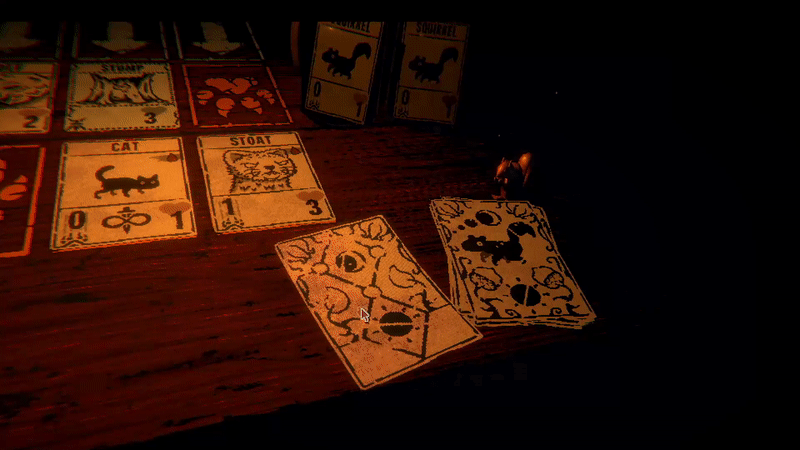
Inscryption embodies this philosophy with how its death cards and sacrificial altars work. Death cards are essentially custom cards, created by the player, utilizing elements of their own deck to combine into one card. The player is given a random assortment of cards from their deck, from which they can choose one card’s play cost, one card’s power and health, and one card’s special effects aka sigils. The result is more often than not something far and away more powerful than what can be normally obtained. The sacrificial altars are similar, allowing you to sacrifice one card to permanently transfer its sigils to another, making a powerful card. This system greatly rewards understanding of the game’s mechanic, and is inherently explorative in nature. Player’s are invited to use the game mechanics as a form of personal experession, so they can leave their own mark (in this case literally, as you can also name the card) on the game. A personal favorite of mine was a card with a medium level of power and health, but no play cost, the ability to attack three times, and the ability to return to my hand when killed on the play field. I called him ‘The Immortal Mantis’. Needless to say, getting this card into play was a reliable way to end matches in my favor. And yet, I never felt as though I was cheating the game, or robbing myself of a more compelling and challenging play experience, because Inscryption like Hades, like Isaac, like enemy players in Dota‘s Ability Draft, and like many other roguelikes, because it took a lot of effort on my part to make this power happen. Either effortful forethought, or playing through a challenging game with little power to start, or both. My ability to swiftly end combat encounters feels earned, and misplays can still lead to a loss by virtue of how lethal a game Inscryption is.

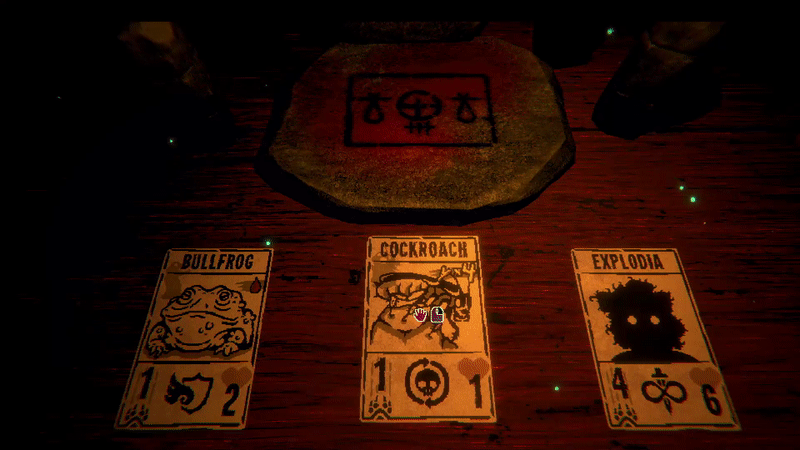
I think making the player ‘too powerful’ is more a question of how you design their environment, or high you contextualize that power, than it is something to be altogether avoided. Inscryption is one of the most compelling play experiences I’ve had this year, all other advantages it has such as its narrative and world-class aesthetic presentation aside. Inscryption certainly allows you to become ‘too powerful’! Power in a combat game often means a wide breadth of possibilities, and that power can translate directly into a sense of ownership of, and self expression within the game mechanics. There are many ways to ‘break’ Inscryption and Isaac and Hades, but no two players are likely to do it in exactly the same way.
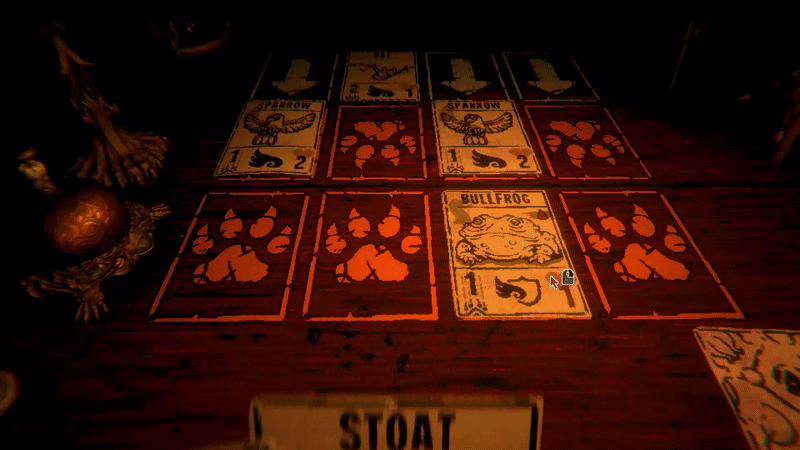
In that fashion, ‘breaking’ the game, is the game. Outmaneuvering and outwitting your opposition is the essence of conflict. Building systems where breaking free from their perceived constraints is the point of those systems seems somewhat counterintuitive, but I think the continued explosive success of the roguelike genre, especially in regards to games that operate this way, speaks for itself. There is a market for this specific flavor of power fantasy, and there are ways to give the player that overwhelming power without trivializing the game.

Sacrifices must be made…
